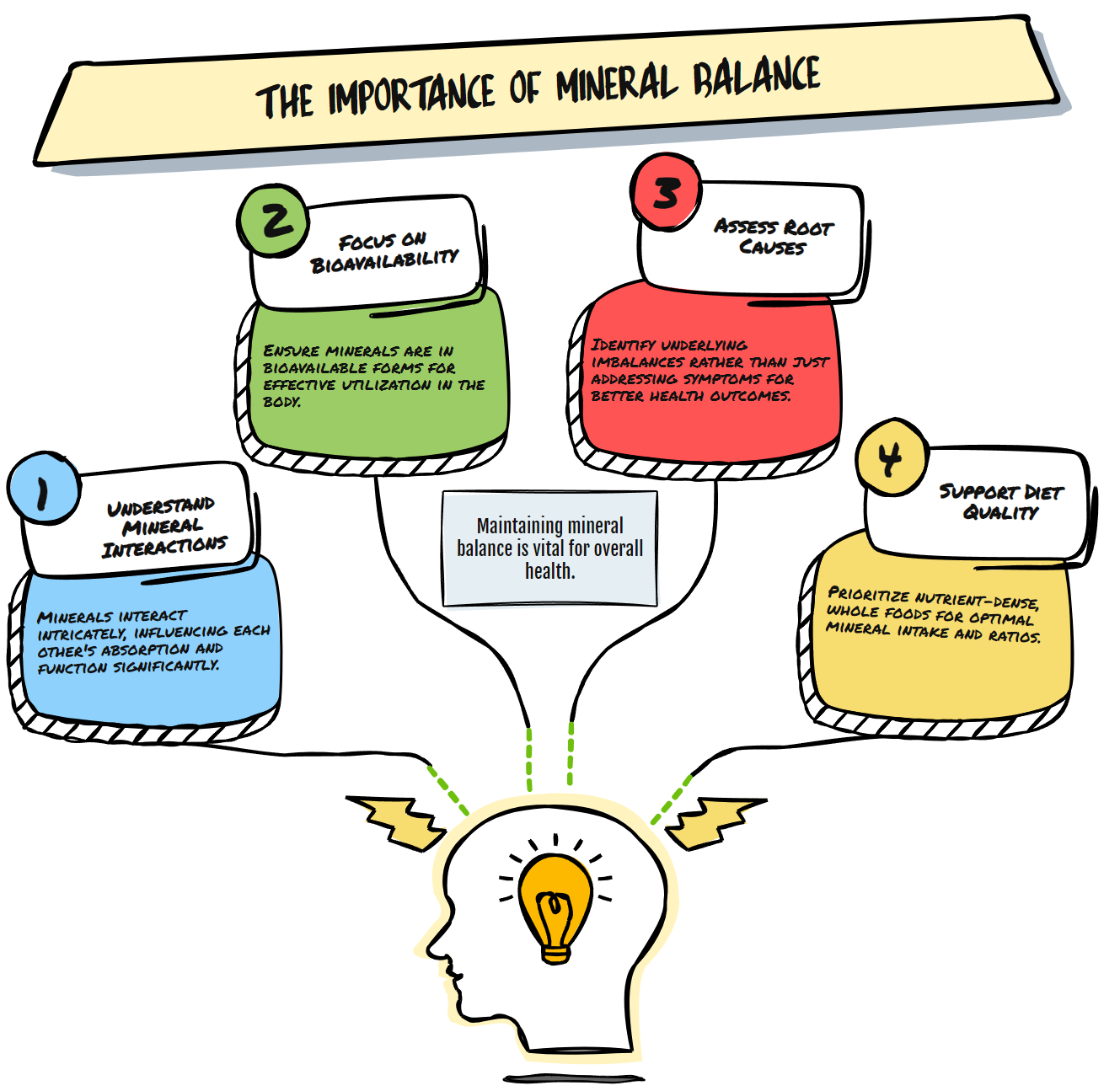
The Hidden Mineral Crisis Undermining Your Health
The Hidden Mineral Crisis Undermining Your Health
Bodies break. Systems fail—health declines.
For decades, we've treated symptoms while ignoring foundations. The medical system excels at crisis intervention but often misses the subtle imbalances that precede disease. Among these overlooked factors, mineral dysregulation is perhaps the most fundamental yet underappreciated driver of chronic health problems.
The conventional approach to health often resembles treating a leaking roof by placing buckets to catch water rather than repairing the hole. Mineral imbalances, particularly involving iron and copper, represent that hidden leak in your body's foundation that no amount of symptom management will resolve.
The Iron Paradox
Iron supplementation remains one of the most common medical interventions worldwide. Yet a growing body of evidence suggests we've been looking at iron all wrong. The problem isn't simply deficiency or excess, but dysregulation.
Iron dysregulation occurs when this essential mineral ends up in the wrong places, at the wrong times, or in the wrong forms. Your blood tests might show "normal" iron levels, while excessive free iron damages tissues.
This misplaced iron acts like tiny sparks, creating oxidative damage and inflammation wherever it accumulates. It can infiltrate the brain, heart, liver, and endocrine glands, contributing to conditions ranging from Alzheimer's to heart failure, fatty liver disease, and hormonal chaos.
The conventional medical approach often fails to distinguish between bound iron (safely transported by proteins) and free iron (the destructive form). This oversight leads to inappropriate supplementation that can worsen the very problems it aims to solve.
Copper Deficiency
If iron represents one side of a crucial biological coin, copper represents the other. These minerals function in intimate partnership, with copper as a key regulator of iron metabolism.
Without adequate bioavailable copper, your body cannot properly control iron. This leads to a cascade of dysfunctions, including:
- Impaired iron transport and utilization
- Reduced production of ceruloplasmin (the primary copper-carrying protein)
- Compromised energy production in mitochondria
- Weakened connective tissue formation
- Diminished antioxidant capacity
Modern agriculture, water filtration, and dietary patterns have dramatically reduced copper intake and bioavailability. Meanwhile, zinc supplementation, often taken without balancing copper, can further deplete this critical mineral.
The resulting copper deficiency creates a perfect storm for iron dysregulation. Your body accumulates iron but cannot properly utilize it, like owning a fleet of cars without keys.
The Mineral Web
Iron and copper represent two strands in an intricate web of mineral interactions. Magnesium, zinc, manganese, selenium, and others influence and depend upon each other in complex relationships.
Viewing minerals in isolation misses their synergistic nature. Supplementing with individual minerals without understanding their relationships creates new imbalances while attempting to correct others.
Consider how:
Calcium competes with magnesium for absorption. Zinc antagonizes copper. Selenium influences iodine metabolism. Iron impacts manganese utilization.
This interconnected system requires a holistic approach rather than the reductionist "one mineral, one problem" model that dominates conventional thinking.
Root Cause Resolution
Addressing mineral imbalances effectively requires shifting from symptom management to root cause resolution. This approach begins with several key principles:
Comprehensive assessment. Standard blood tests reveal only a fraction of your mineral status. More sophisticated testing, including red blood cell mineral analysis, specialized copper biomarkers (like ceruloplasmin), and functional assessments, provides deeper insights.
Bioavailability focus. The form of minerals matters as much as the amount. Bioavailable forms in proper ratios support natural biological processes rather than forcing artificial changes.
Systems thinking. Minerals function within biological systems, not in isolation. Addressing one imbalance requires understanding its relationship to the whole.
Individualized approach. Genetic variations, gut health, stress levels, and environmental exposures all influence mineral needs and utilization. Cookie-cutter protocols inevitably fail.
Patience and persistence are required. Mineral rebalancing requires time. Cellular turnover, enzyme induction, and homeostatic adaptation follow biological timelines that cannot be rushed.
Beyond Supplements
Genuine mineral rebalancing extends far beyond taking supplements. It encompasses:
Dietary foundations. Nutrient-dense, properly prepared whole foods provide minerals in natural ratios with their cofactors.
Digestive optimization. Without adequate stomach acid, enzyme activity, and gut integrity, minerals remain unavailable regardless of intake.
Toxin reduction. Heavy metals and environmental toxins displace essential minerals and disrupt regulatory systems.
Stress management. Chronic stress depletes magnesium, alters sodium/potassium balance, and disrupts zinc metabolism.
Movement patterns. Physical activity influences mineral utilization, storage, and excretion in ways that complement dietary approaches.
The Future of Mineral Medicine
As research advances, the central role of mineral balance in health becomes increasingly apparent. From neurodegenerative diseases to cardiovascular conditions, metabolic disorders to autoimmune challenges, mineral dysregulation appears as a common thread.
The emerging field of metallomics, studying the entirety of metal and mineral species within biological systems, promises to revolutionize our understanding of health and disease.
Forward-thinking clinicians already recognize that addressing mineral imbalances, particularly the iron-copper relationship, offers leverage points for seemingly intractable health challenges.
This root cause approach doesn't reject conventional medicine but complements it by addressing the foundations upon which all biochemistry depends.
Foundations First
Health crumbles when foundations fail. Mineral balance represents the often-overlooked foundation upon which optimal function depends.
By understanding and addressing the complex interplay of minerals, particularly iron dysregulation and copper deficiency, we gain powerful tools for preventing and resolving chronic health challenges.
The path forward lies not in more aggressive symptom suppression but in restoring the fundamental balance that allows your body to heal itself. When you build from this foundation, sustainable health becomes possible in ways that symptom-focused approaches can never achieve.
